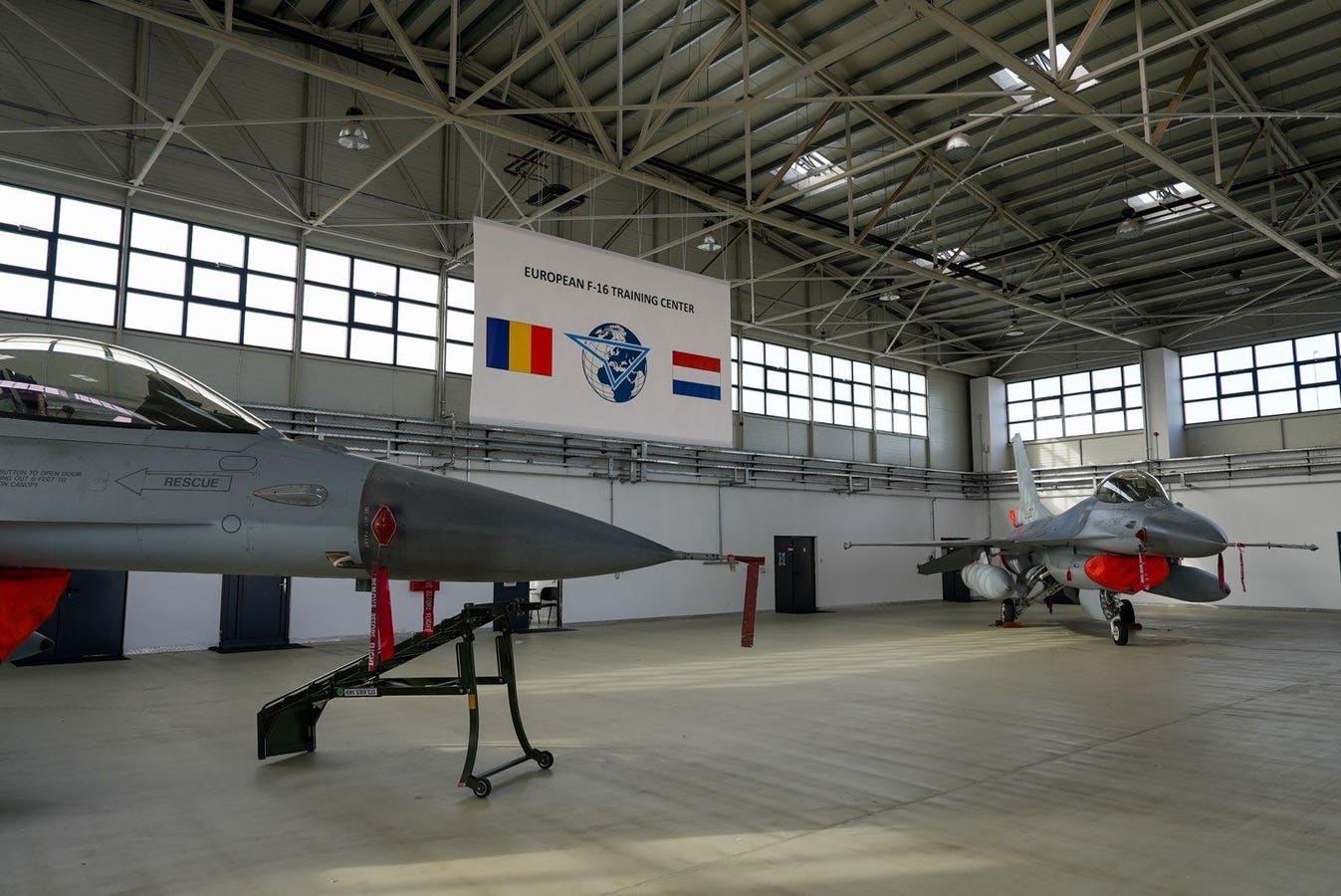Last week’s news that the first Dutch F-16s dedicated to train Ukrainian pilots arrived in southern Romania left out an important detail. Who’s training the Ukrainians?
Five of the Dutch fighter jets landed at Romania’s 86th Air Base, near Fetești, on November 7. The new European F-16 Training Center (EFTC) will technically be used to train both Ukrainian and Romanian Viper pilots.
While the jets are Dutch (and remain property of the Netherlands), the pilot instructors are not. Most media reports describe the instruction and maintenance as provided by Lockheed Martin
LMT
They include Daedalus Aviation Group, Draken International, GFD (a subsidiary of Airbus Defence and Space) and ILIAS Solutions.
Draken International and GFD will provide “experienced F-16 instructor pilots with recent front-line experience flying F-16s in the U.S. Air Force and air forces throughout Europe,” according to a Lockheed Martin release from earlier this week.
As I wrote earlier this year, Draken was a likely candidate to train Ukrainian pilots alongside the U.S. Air Force’ 162nd Wing, Arizona Air National Guard, whether in the U.S. or in Europe. In 2021, Draken announced that it would acquire 24 ex-Dutch and ex-Norwegian F-16s for its contract adversary air services operations with delivery expected sometime in 2022.
However, the deliveries were never formally made despite a few of the jets making their way to Draken’s Lakeland, Florida headquarters – likely owning to the start of the Russian invasion of Ukraine in February 2022. But the relationship Draken established with the Dutch and Norwegian governments probably paved the way for its participation in the EFTC.
So has its relationship with Lockheed Martin which comes via Draken International’s owner, private equity firm, New York-based Blackstone
BX
Within the “red air” adversary contractor community, Draken’s inclusion in the EFTC team is not a surprise. Draken has a significant number of pilots with F-16 instructor experience and personal connections to Lockheed Martin. The use of private contractors also allows the U.S. government to maintain some diplomatic distance from a training operation right on the doorstep of the conflict zone.
Draken’s instructor pilots will be complemented by instructors from GFD. The north German company employs a staff of 250, 100 of which are German air force and navy veterans. They maintain and operate a fleet of 15 specially equipped Learjets that provide target simulation and flight inspection. The company counts over 50 simulator instructors for the Eurofighter, Tornado and A400M among its ranks.
Simulation instruction appears to be the role that GFD personnel will assume within the EFTC team. It’s also possible that GFD Learjets could act as target simulation platforms for the Ukrainian and Romanian pilots progressing through the training syllabus at EFTC.
Daedalus Aviation Group an F-16 MRO (maintenance, repair, overhaul) based in Tilburg, Netherlands will manage the maintenance of the EFTC Viper fleet which may grow to a complement of 12-18 aircraft or more. Its technicians will apparently work alongside counterparts from Draken and Lockheed Martin itself.
ILIAS Solutions, a Belgian firm which provides logistics and fleet management software solutions for the Belgian Air Component (Belgium’s air force which flies F-16s and F-35s) and the Royal Australian Air Force will tackle logistics and sustainment/training management and flight scheduling for the team.
The combination of European and American contractors jives with the sources of the aircraft which will be used for training and those that may ultimately be transferred to the Ukrainian Air Force as well as the recently announced Romanian deal to buy 32 F-35s from Lockheed Martin. The scheme also symbolizes an integrated NATO-esque training organization in line with Romania’s membership in the Alliance and Ukraine’s long-term desire to join.
The practical establishment of the EFTC is another step in the winding road to providing Ukraine with fourth-generation western aircraft and pilots capable of employing them. Whether the men and the machines will ultimately go up against Russian forces in Ukraine remains to be seen.
Read the full article here





